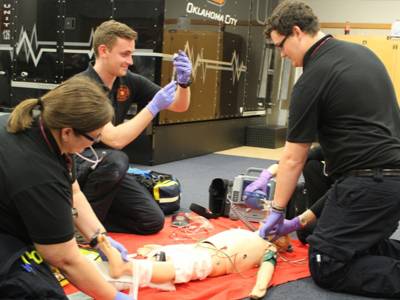Paramedic

What is paramedicine?
Our mission is to educate students in the profession of Paramedicine, thereby enabling
them to provide the highest level of prehospital care, professionalism, and leadership.
Our students have a high success rate on the NREMT cognitive and psychomotor exams.
Graduates receive BLS, ACLS, and PALS certificates.
Why paramedicine?
The Paramedicine program provides students with the resources to help them succeed
and move forward with their academic careers. Not only do all of our full-time faculty
and program director continue to work as providers in the field, but our students
also have the opportunity to gain hands-on experience through partnerships with local
EMS agencies, fire departments, local operating rooms, and even OSU football!